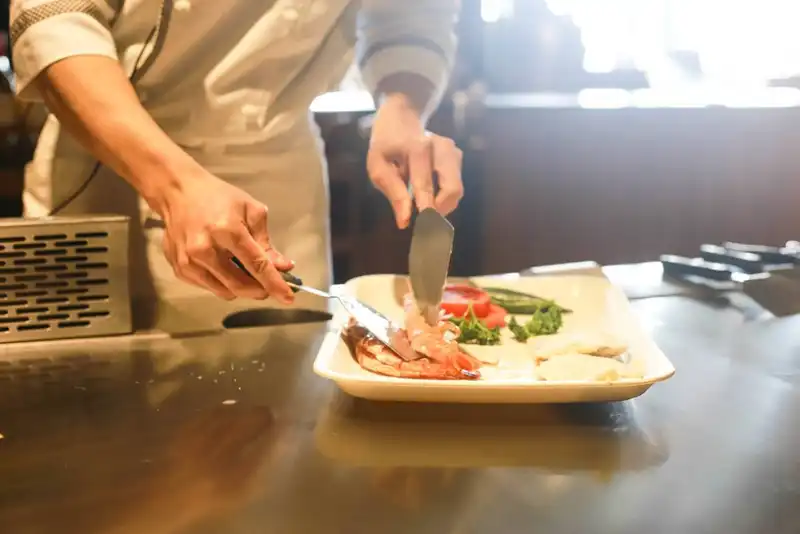5 Best Practices for Restaurant Inventory Management
What is Restaurant Inventory Management?

Inventory tracking is an essential component of restaurant management. Calculating food costs are one of the biggest factors when it comes to budgeting. Accurate restaurant inventory management will keep track of all ingredients for the restaurant food as well as other supplies.
Food inventory done by hand can be time consuming. Having restaurant inventory software will take out some of the hassle. The inventory management system will vary based on the restaurant's individual needs. Most restaurants will track any food waste to ensure costs don't become inflated. Managing inventory through the use of software is often used to monitor those issues.
5 Restaurant Inventory Management Best Practices
To track inventory correctly means to know the exact inventory amount in order to minimize loss and maximize profits. Here are 5 best practices to follow for a successful inventory process.
1. Use a POS system
A restaurant POS system is an integral part to the success of any restaurant business. This type of restaurant inventory management software provides data such as order planning reports, integrated accounting, and automated inventory tracking. A POS can also be customized for other needs such as inputting any waste or spillage that should be noted.
2. Keep a Consistent Inventory Schedule
Take inventory at the same time- daily weekly monthly. The results will be more accurate, highlighting when ingredients are used and to what degree. Knowing these numbers will help when making adjustments for the next purchase order.
3. Use Past Inventory Data When Ordering
Keeping a consistent inventory schedule will also become helpful when it's time to order new supplies. Studying the data that is derived from the inventory of ingredients will help come time for ordering. The data from tracking inventory will cut down on guessing and will provide trends for future economic decisions.
4. Follow the First In, First Out (FIFO) Method
Make sure storage areas are organized with the FIFO method. First in, first out ensures that the inventory that has come into the restaurant first, will be used first. This minimizes spoilage and waste which can become costly if not monitored. Using the FIFO method for proper food storage is especially important for perishable items.
5. Minimize Food Waste
If an inventory report yields excess for some ingredients, use them for existing menu dishes or create specials. Sitting inventory should never go to waste. There are always opportunities to avoid wasting food or potential sales. Just ensure to let guests know of any menu changes.
Tips for Managing Restaurant Inventory Systems

Inventory control is one of the top priorities of restaurant management next to having exceptional customer service. Proper food inventory management helps restaurants and any small business maximize the ROI of supplies purchased. Keeping close tabs on inventory is especially important in the restaurant industry where every little bit counts towards profit margins.
Organize food storage
A storage area in disarray will not only be a food safety issue but will also cause miscounts during inventory. No matter how busy the restaurant gets, the food storage should remain clean and organized. A pantry or walk-in freezer have the following-
- Items grouped by category
- Clearly labeled shelves
- Clearly labeled food items
Assign an inventory team
As mentioned, inventory counts should be done at the same time each day to retain consistency. That's also why a specific team of staff members should be taking inventory. Once the team is assembled, an inventory counting schedule will let them know when they should count inventory. All of this will cut out confusion.
Create an inventory consumption sheet
An inventory consumption sheet can be created inside a POS system. This inventory sheet will track how much of an item is used each day. Tracking inventory daily, with a consumption sheet to refer back to, provides a better understanding of how much of a specific ingredient comes in and goes out of the restaurant. Knowing this information will help to adjust the quantities of low inventory on the upcoming purchase orders.
Each restaurant will have their own consumption sheet depending on the menu, but most sheets will have these items on it-
- Ingredient name
- Unit of measure
- Amount used
- Cost per ingredient unit
- Total cost
- Beginning inventory
- Ending inventory
- Daily consumption rate
- Waste quantity
- Waste cost
Having these precise numbers provides more accuracy and is highly advisable for restaurant inventory management.
Track your sales every day
Sales should be monitored every day in real time. It puts the restaurant in a better position to make changes before they impact overhead. For example, if a menu item is a more popular seller than expected, and ingredients are running low, an order can be adjusted to meet the demand for those menu items.
Use the right restaurant technology
Tracking inventory by hand can be time-consuming and not always accurate. The technological advances in the restaurant industry have provided many solutions to make restaurant inventory management run smoother with more accurate data. Inventory management software can even be cloud based to keep from losing important data.
Restaurant Inventory Systems Bottom Line

- Take initiative with restaurant inventory management
- Use the right restaurant management software to manage inventory
- Doing inventory at the same time each day with the same team provides more accuracy.
- Inventory levels should be tracked diligently for the restaurant to remain financially healthy





